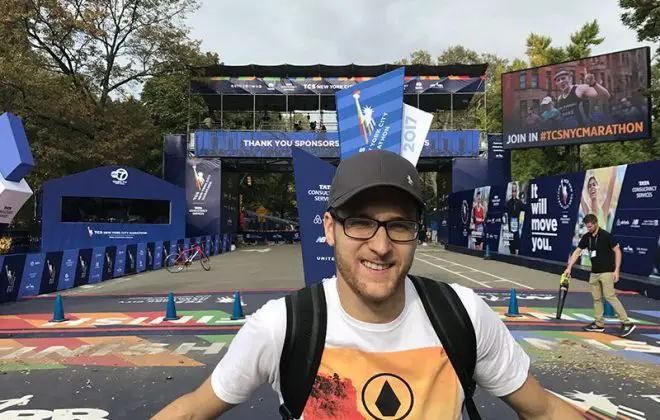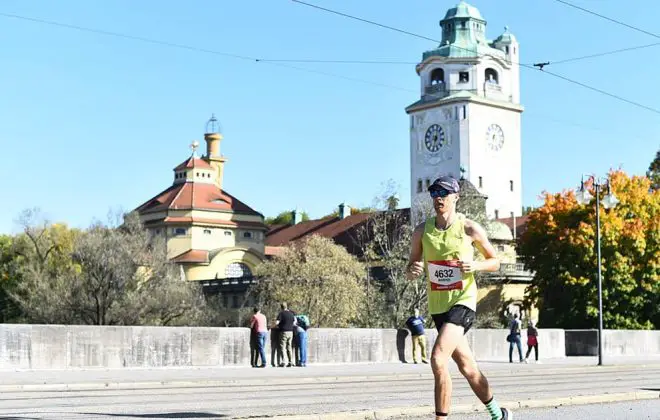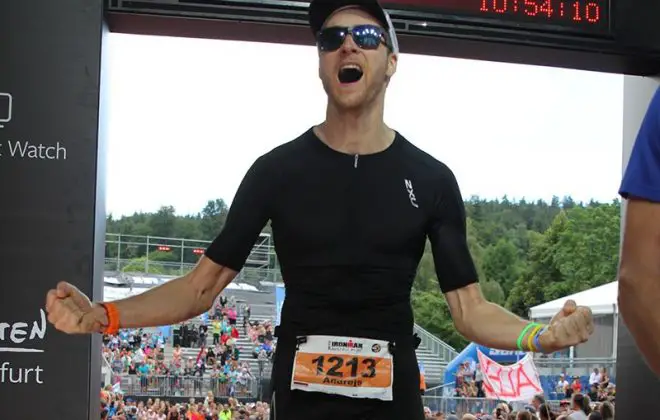Analyzing My First Ironman Triathlon – What Would I Do Differently?
Now that a couple of weeks have passed since my first Ironman triathlon, it’s time to dig into what worked and what didn’t. There’s a lot of details and experience to be remembered. I don’t want it to get ‘blurred’ over time.
This is more of a ‘reference’ post for myself to sum up what I should improve and pay attention in my future races.
My first Ironman triathlon
My first Ironman triathlon was IRONMAN Austria-Klagenfurt 2019. Overall, I think I did good, finishing in 10:48:05.
To be honest, I did have a vague theoretical time goal in mind. I tried my best not to get attached to it and avoid making any ‘official’ predictions – both to myself and to others. Now that the race is over, I can admit that I felt prepared for a ~9:45 result. In my head it was more like a best case scenario of what my body was physically capable of on a perfect day.
But a long distance race – let alone an ultra endurance one – is hardly ever perfect. A lot can happen over a course of a 10+ hour day.
Related: Ironman Austria Race Report – The Story Of My First Ironman Race
I did make some mistakes in the taper period and during the race itself that impacted my performance. No doubt about that. However, the good news is that my training and expectation of physical fitness were quite on point.
For my first Ironman triathlon I’m more than satisfied with the result. My goal was to finish and treat all setbacks as learning opportunities. After all, I didn’t get to the World and European level in kayaking in one year as well. It took a while to develop the engine and then get the experience how to execute a race.
So, what happened?
#1 The swim
The swim part went really smooth, even though I had some concerns before the race.
First of all, it was a non-wetsuit swim. That meant it would be slightly slower and tougher, as there will be no extra buoyancy to support.
Second, throughout my training I only did one continuous 4K swim – it was in a wetsuit and featured stops every 500 meters or so. Even though I did a lot of non-stop 2K swims and a lot of technique and speed sessions, I was not sure how my shoulders would feel after an hour of swimming.
In the end, it all turned out better than expected. Garmin showed that I swam 4K and my swim time was 1:06:59. As I ran towards transition I told myself that for my first continuous 3.8K swim, without a wetsuit, with 2x stops to fix the chip that was almost kicked off it’s a great result.
And that’s on only 2 swimming sessions per week! Honestly, I’m not sure if I would want to change anything here.
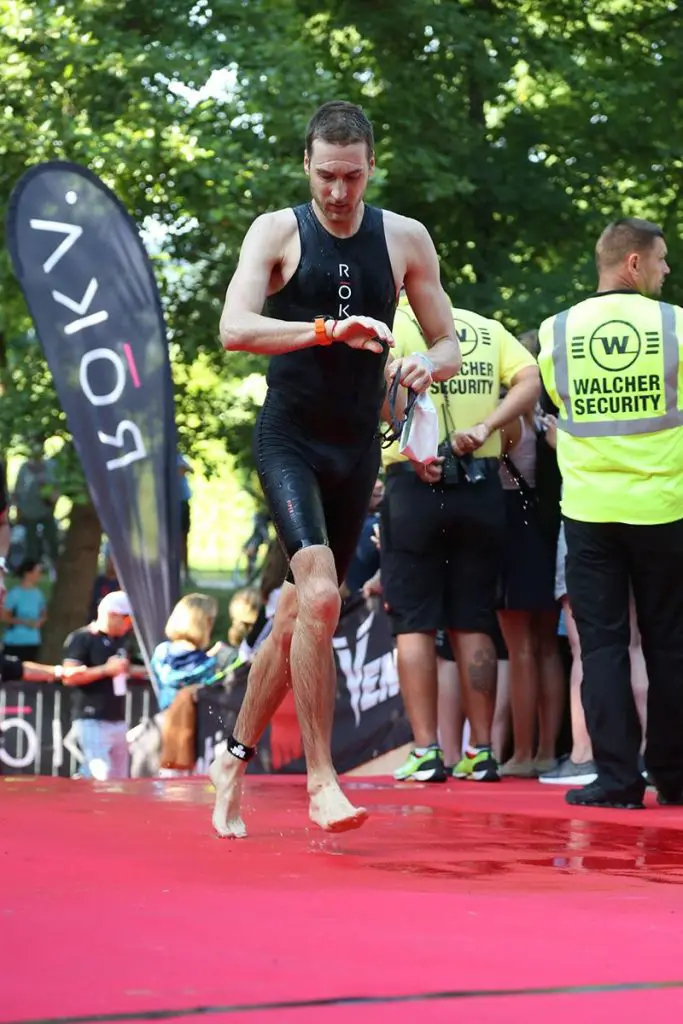
From race execution perspective I definitely need to practice my sighting skills. If the Garmin data is correct and I swam 200 extra meters – that’s at least 3 minutes lost.
From training perspective, I’d work on a stronger pull phase during pool sessions. And add one swim session per week to focus on longer efforts (i.e. 500 meters) with good technique. Preferably in the open water and without a wetsuit.
#2 The bike
The bike part was my biggest concern. I only really started training on the bike for the last year’s Luxembourg 70.3. Even though I focused a lot on the bike training throughout the last 6 months, I was still unsure how it would go.
Based on my long training rides and tests I expected to hold around 200W throughout the race. According to even the most conservative BestBikeSplit estimate that would result in a time of 5:15, whereas my bike split was 5:48. I felt that result was far from what I was capable of and I see 3 areas where I can improve.
But then again, it was my first Ironman triathlon and I never ran a marathon after 180K on a bike. Can’t complain about having no prior experience.
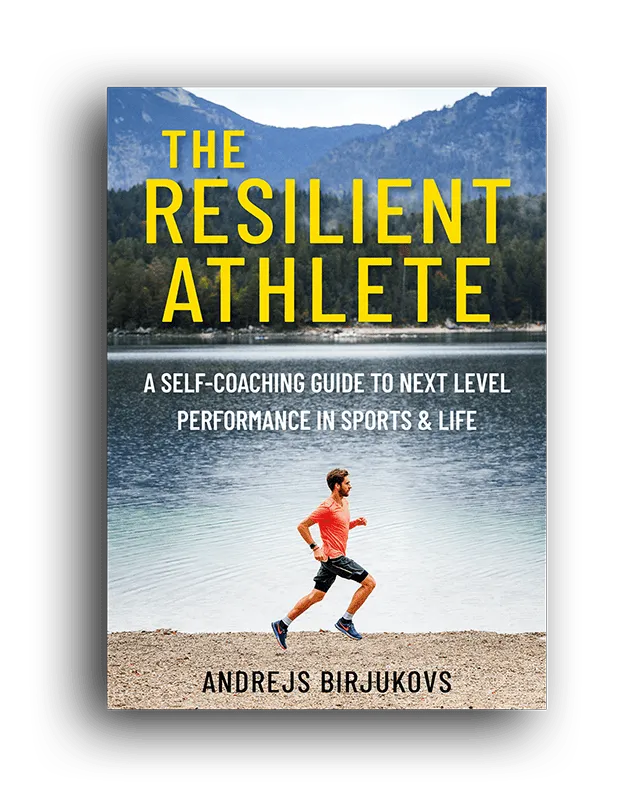
The Resilient Athlete
A Self-Coaching Guide to Next Level Performance in Sports & Life
Are you aiming to become a resilient athlete who is able to withstand any pressure? Be able to jump on any opportunity? Take any challenge life throws at you head on?
Then this book is for you.
Learn moreBike taper
First of all, I think I went too far in the peak period.
Throughout my training process I generally tried to stay on the easier side. I did a lot of longer Zone 3 intervals and kept efforts in Zones 4 and 5 very short. In the peak weeks, though, I added both distance and intensity, which was a mistake.
Right before the taper started there were two particularly hard weeks when I did a couple of intense sessions with incomplete recovery. I tried to push myself, but I didn’t have the power to finish a 4×4 minute session.
Related: High Intensity Training For Endurance Athletes – How Much Is Too Much?
After that I struggled with fatigue and couldn’t feel the power that was there a month ago. I should have taken a week easier and gone back to Zone 3 intervals.
Pacing on hills
Second, during the race itself I think I overdid the effort. Once the hills have started and my heart rate went up I had hard time maintaining an ‘easy effort’ – on some climbs my power was as high as 280W.
However, on the last major climb (Rupertiberg) I was able to push ‘only’ 210W in the smallest ring. I should have done that throughout the whole race, but it seemed I needed 150K of practice to learn the skill of pacing on the hills.
In the future I’ll need to include more rides outdoors that feature climbs, so that I can get used to pacing evenly by watts.
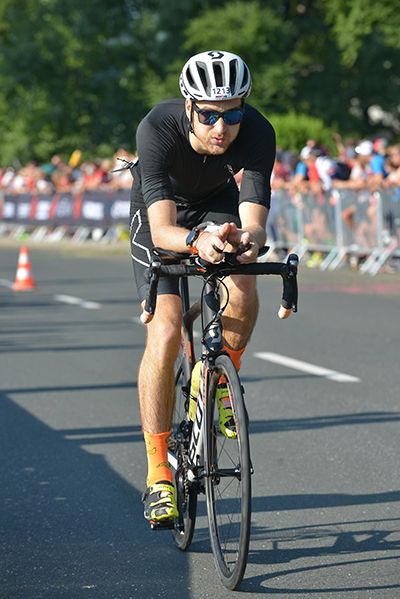
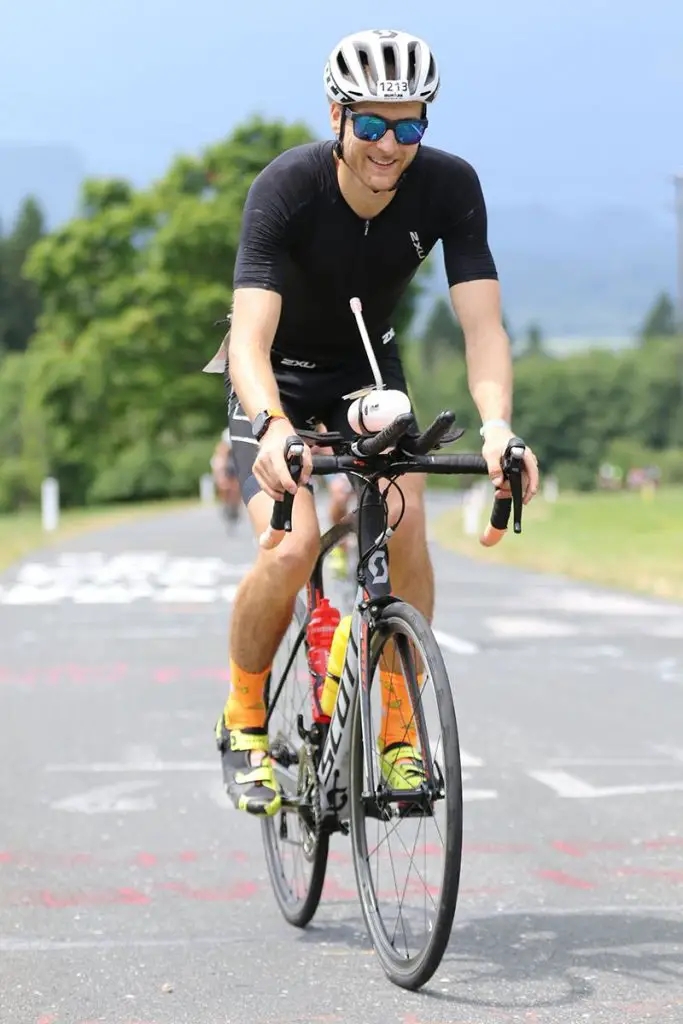
Bike nutrition
Finally, I feel I could perform better with a little bit more nutrition on the bike.
Twice during the bike leg I had a feeling similar to the one I experienced towards the end of some of my long training rides. I felt I lacked the power, but didn’t feel my leg muscles getting tight.
I planned 60 grams of carbs & ~800-900ml of fluids per hour for the bike leg and executed it really well. My strategy was to eat one energy bar and one gel per hour for the first 4 hours. After that – drink 2.5 gels per hour and iso at aid stations.
How I did it is I had energy bars stuffed in my back pockets and 8 gels mixed with some water in one of my bottles on the down tube. During every second aid station (~ every hour) I’d grab a water bottle, fill the aero bottle in front (750ml), pour some on myself and drink a bit before throwing out. Then I’d grab a bottle of iso, drink a bit and throw out. Finally, grab the water again, top up the aero bottle and put whatever is left on the bike. After that I’d add a gel to my aero bottle and was all set for the next hour.
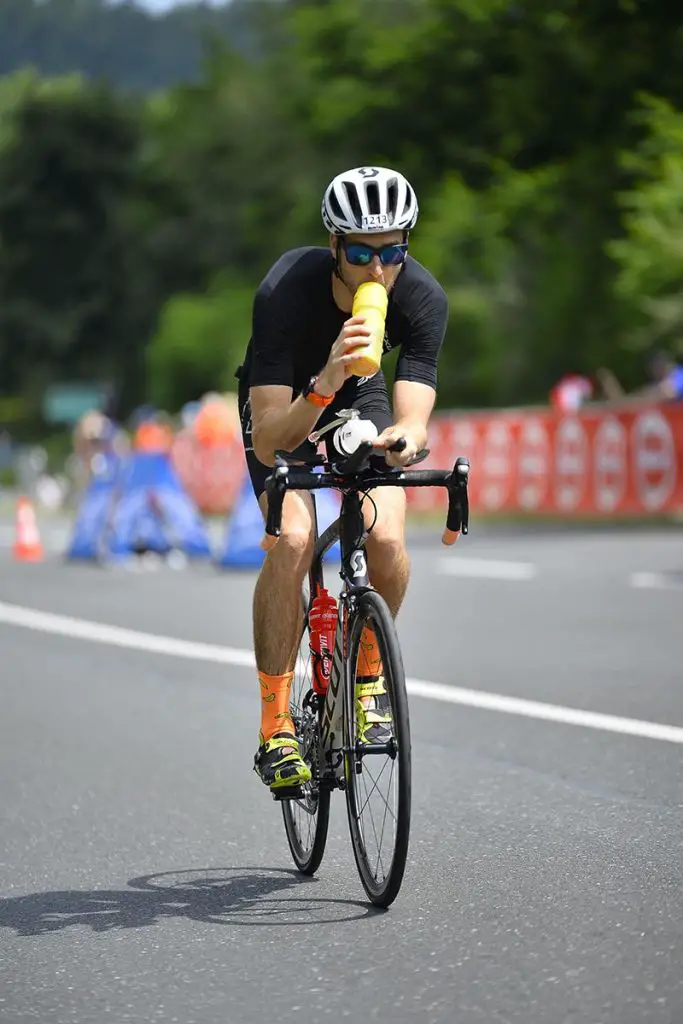
#3 The run
Even though I was confident about my running, that was where I had the most problems. 3:42 is not too bad for an Ironman marathon, but I know I have much more than that in me.
Also, I felt I wasted at least 15 minutes on toilets. Quite literally – sitting on them and waiting in lines…
It took me a while to reconstruct the chain of events during the Ironman marathon, but I think I got a good hold of it by now:
- 1-3K – pace 4:40, drank the pre-mixed gel I took in transition
- 4-8K – pace 4:55, drank the first ‘on-course’ gel
- 9-12K – pace 5:10, drank the second gel
- 13K – same pace, first signs of GI issues, drank the third gel
- 14-21K – pace 5:15, growing stomach problems, one more gel at 21K
- 22-28K – pace 5:30, GI issues
- 28K – crackers and watermelon
- 33K – pace 4:55, final gel
- 34-42K – pace 4:40, push to the finish
The run is definitely where most improvements in race execution are to be made. But it really comes down to two factors – pacing and nutrition.
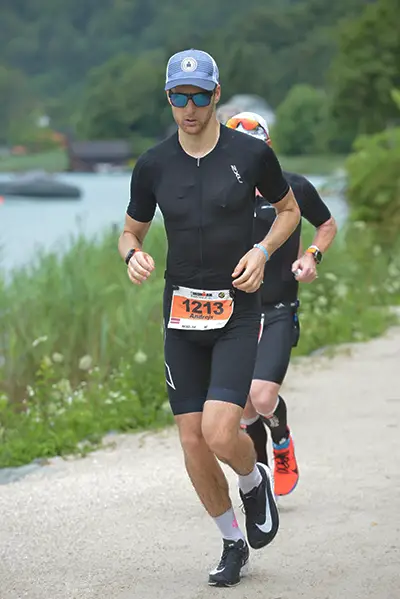
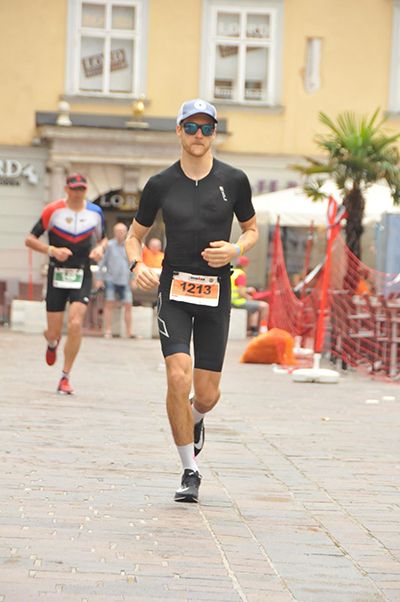
Pacing the start
My plan for the Ironman marathon was to run the first 3-5K at 5:00 min/km and increase the pace after that. From long training days I knew I can maintain that effort for over 2 hours even after a long bike. I expected that after 3K I would be able to increase that effort slightly to 4:50 and push in the last 5-10K. In the best case scenario, that would mean a ~3:20 marathon.
Clearly, I was bad at execution. With all the rain and excitement I averaged 4:40 min/km in the first 5K. Soon after I started to feel low on energy and it threw the whole pacing off. The plan was good, however. Next time I should really stick to it.
Nutrition
Now the big one.
I had 3 gels with me as I headed out of T2 and planned to consume 1x every 40 minutes. However, 2 of the gels that were in my back pockets fell off during the first kilometers of the race.
I didn’t really have a plan B for my nutrition, so I had to take the gels provided on course. Those gels had less carbs in them and much less sodium. In my ‘delirious’ state I felt I needed more to bump the energy levels back up.
The gastrointestinal distress (GI distress) that I experienced after ~14K was not because I drank too many gels too soon. It may have contributed – yes – but the main factor was that I didn’t drink enough water with those gels.
The optimal consistency for absorption of carbs during exercise is around 7-8%. That means 100ml of fluids should contain no more than 7-8 grams of carbs to be absorbed well. Anything more than that will only get absorbed at lower intensity (during recovery, for instance).
Gels are super concentrated – each packet had 20 grams of carbs in it. And even though I drank water on top of each of the gels, there was no more than 100ml in a cup if I haven’t spilled anything. For optimal digestion I should have drank 750ml of water during those 45 minutes. Instead, I think I barely drank 250ml…
Something to keep in mind for the next race.
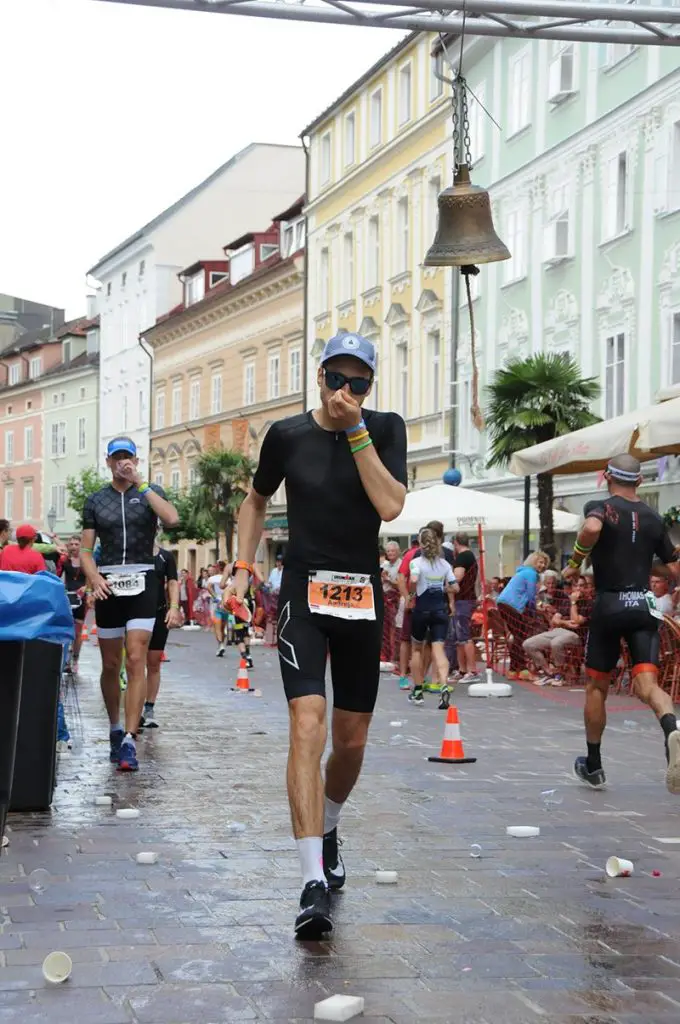
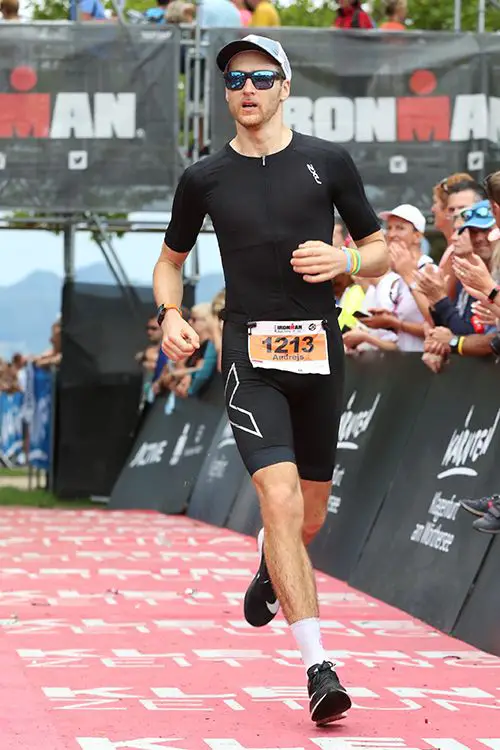
Post-race thoughts after my first Ironman triathlon
My first Ironman triathlon was full of highs and lows. I learned a lot about training, racing, nutrition and about myself in general. And I am very thankful for the whole experience.
Sure, right after the race I felt tired and thought “Why would I ever do this to myself again?”. But then, as the time passed and I looked deeper into how the race went, I saw that mistakes I made are easily preventable with some race-specific training. There’s still a lot of potential to improve – I just need better execution.
So, yes, I’m excited to do another Ironman in the future. And really race this time. Not sure when it’s going to happen, as it takes a lot of organization and time to prepare. But this one was definitely not my last.
Did you find this information useful? Share the post with others using the buttons below.
Have an opinion? Share via links below and tag @theathleteblog
Andrejs Birjukovs
GET A FREE TRAINING PLAN
Subscribe to my email list and get access to a free 4-week “back in shape” training plan
You’ll also get two full-body strength sessions and some other goodies!
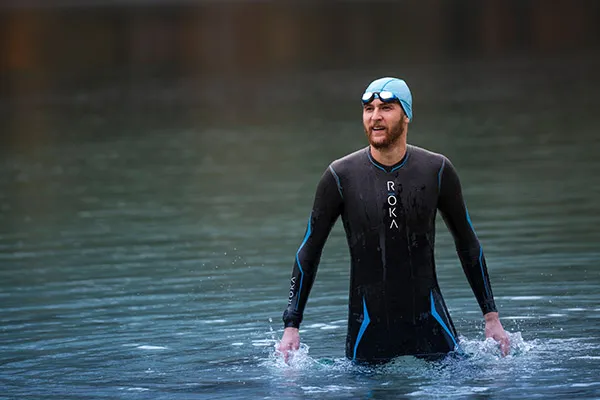
How did I get here?
Hey there! My name is Andrejs and I am here to inspire, entertain and get you fit for any adventure.
I went from being an over trained pro athlete to an endurance coach sharing how to listen to your body and live life to the fullest.
Traveling, new sports & activities brought new meaning to my training and made it much more effective, fun and enjoyable. And I'm here to help you do the same.
